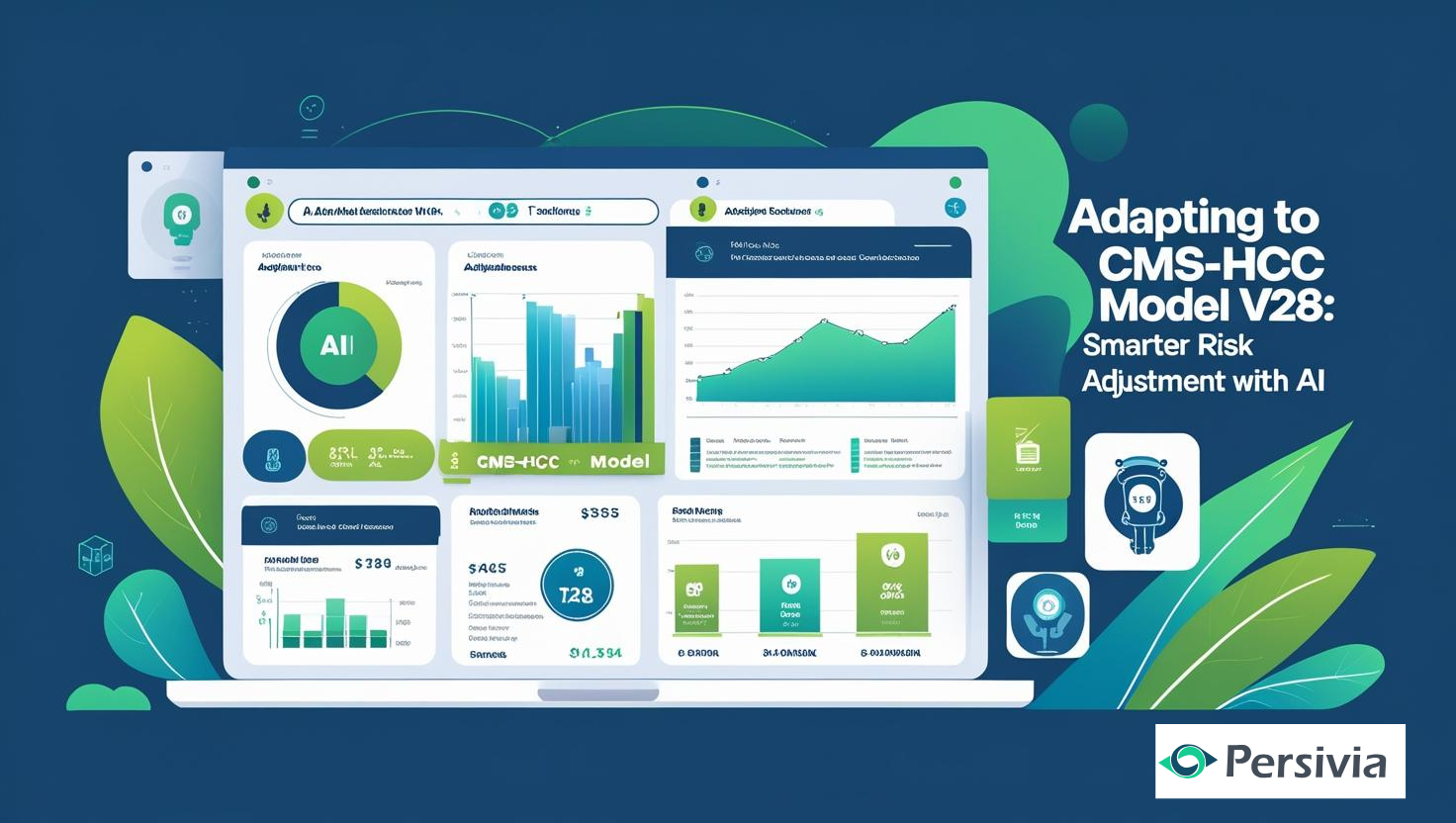The CMS-HCC Model V28 is a major update to Medicare’s risk adjustment framework, focusing on accuracy, equity, and budget neutrality. This version eliminates over 2,200 codes and changes coefficients for prevalent chronic conditions, which will impact provider revenue unless documentation practices improve.
- The V28 Risk Adjustment model reduces coding opportunities for diabetes, COPD, and depression.
- MA vs FFS risk scores are expected to narrow by 7–10%.
- Providers using AI tools and NLP, such as Persivia CareSpace®, can better adapt to this shift.
To respond to these sweeping changes, healthcare organizations need to embrace solutions that support dynamic, real-time adjustments. The CMS HCC V28 version places intense focus on accurate documentation and streamlined data management, making platforms with integrated analytics and NLP indispensable. Even as coding complexity rises, providers may maintain compliance, effectively close gaps, and optimize income potential by utilizing a strong digital health platform.
The whole healthcare sector is alert when Medicare makes adjustments to its regulations. The rollout of the CMS-HCC Model V28 brings new documentation demands, revised HCC groupings, and a serious shake-up in risk scores. Organizations that delay adapting to these updates risk falling behind on both performance and reimbursements.
What Changed With CMS-HCC Model V28?
The CMS-HCC Model V28 introduced the most significant overhaul since version V24. The model now includes 115 condition categories (up from 86) and has removed thousands of less-predictive diagnosis codes. Notably, it recalibrates risk scores for common chronic conditions:
- Diabetes
- Congestive Heart Failure
- Chronic Obstructive Pulmonary Disease (COPD)
- Depression
The goal of these changes is to curb upcoding activities and better match Medicare Advantage payments to actual medical requirements.
Why It Matters
The average difference in risk scores between Medicare Advantage and Fee-for-Service patients was nearly 17% in 2023. With V28 Risk Adjustment, CMS expects to bring that gap down to under 10% by 2025. This has big implications for both plan performance and provider reimbursement
How V28 Affects Provider Strategy
Less Is More Literally
With fewer diagnosis codes being considered, many providers may see a decrease in their Risk Adjustment Factor (RAF) scores. If your documentation doesn’t fully support the revised HCC mappings, revenue could take a hit.
RAF and Documentation Accuracy
Accurate coding is now more essential than ever. Even one missed opportunity in documentation could lead to undercompensation.
Reality Check: Providers who do not adjust to V28 coding updates risk significant revenue loss every quarter.
Adapting Through Technology
Why You Need Tech on Your Side
Providers and plans that rely solely on manual chart reviews are more likely to miss nuances in documentation. Advanced AI and NLP tools help identify HCC opportunities from both structured and unstructured data. That’s where a comprehensive Digital Health Platform becomes a game-changer.
Using Persivia CareSpace®
Persivia’s CareSpace® offers a complete platform that supports V28 readiness through:
- Real-time alerts that notify physicians during care episodes
- Integrated NLP that extracts HCCs from clinical notes with over 98% accuracy
- Visualization of V24 vs. V28 score differences
By bringing together data, analytics, and workflow tools, Persivia delivers an unmatched approach to V28 Risk Adjustment.
Implementation Best Practices
Smart Steps to Get Ready
- Audit Documentation: Compare past and current ICD-10 to identify coding gaps.
- Train Your Team: Conduct training for clinicians and coders on V28 changes.
- Use Real-Time Tools: Implement tools that integrate seamlessly with your current EHR.
- Monitor & Adapt: Continuously track RAF scores and adjust workflows accordingly.
Data-Driven Results: Providers using AI tools like Persivia report up to 120% improvement in HCC capture.
What’s Next for Risk Adjustment?
It is anticipated that the CMS model’s emphasis on equity and transparency would persist in subsequent iterations. Businesses that already prioritize these goals will be in a better position than others.
Takeaway
Medicare’s risk assessment is being transformed by the CMS-HCC Model V28, which is already having an impact on national budgets and results. Keeping up with documentation and coding is now essential for survival due to code eliminations, updated condition categories, and stricter scoring models. The best course of action is to embrace solutions that integrate AI-driven insights with structured data.
The Persivia Advantage
Looking to future-proof your risk adjustment strategy? Persivia CareSpace® offers a powerful blend of AI, NLP, and real-time analytics to help you thrive under V28 Risk Adjustment. With seamless integration, unstructured data capture, and real-time RAF optimization, Persivia makes adapting to CMS changes less stressful and far more effective.
Get Started with Persivia.
